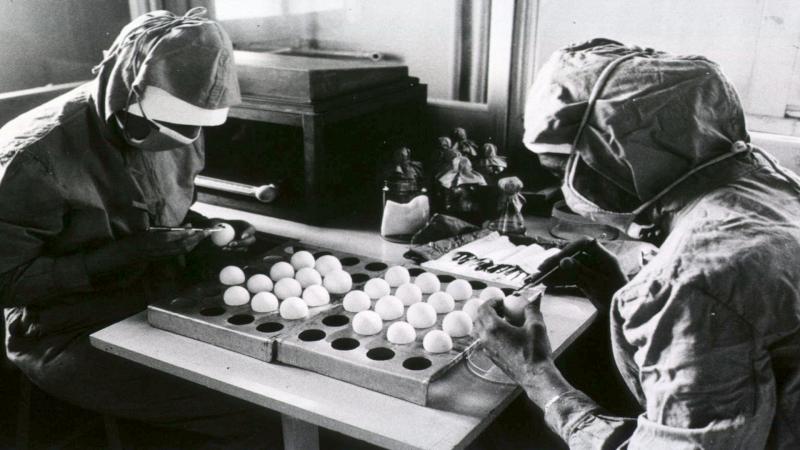
“As the world confronts the COVID-19 pandemic, humanity’s victory over smallpox is a reminder of what is possible when nations come together to fight a common health threat,” said Tedros Adhanom, Director-General of the World Health Organisation (WHO), in a recent media briefing. “The smallpox eradication campaign had one crucial tool that we don’t have for COVID-19 yet: a vaccine; the world’s first vaccine,” he added.
Our success in dealing with smallpox, a disease that terrorised humanity for over 12,000 years, is a milestone because it was the only human disease to be successfully eradicated. Our ammunition against this disease was a vaccine. Today, we have traversed a long way forward in vaccinology, and according to a WHO report, we have vaccines against more than 25 debilitating or life-threatening diseases, including measles, polio, tetanus, diphtheria, meningitis, influenza, tetanus, typhoid, and cervical cancer. Not only have the number of diseases against which vaccines are available increased but also newer and better methods in vaccinology have emerged.
The history of modern-day vaccines, however, can be traced to this day, 224 years ago. In 18th century Europe, smallpox was a widespread infectious disease, claiming an estimated 4,00,000 lives each year. Edward Jenner, an English physician who is today called the ‘father of immunisation’, observed that people who had contracted cowpox seemed to be protected against smallpox. Moved by this observation, he went on to test his intuitions by inoculating a boy with cowpox infection on 14 May 1796. Though the child fell sick of cowpox initially, he quickly recovered. Subsequently, Jenner inoculated him with the smallpox virus, and the boy did not develop the disease.
Fascinated by this discovery, Jenner named his procedure Variolae vaccinae (smallpox of the cow), and it was the first scientific attempt towards controlling infectious disease. Today, the widely used word vaccination takes its root from Variolae vaccinae.
How do vaccines work?
A healthy human body has all the machinery, in the form of an immune system, needed to fight pathogens, like bacteria or viruses, entering it. When a pathogen gets inside our body, our immune system receives a message, and it starts making soldiers, called antibodies, to fight these invaders. The only problem is that this process is time-consuming. Many times, while our body is still making these antibodies, the invading pathogens would have already done enough damage. Hence, despite a defending immune system, we do end up contracting various diseases.
The good news is that our body’s immune system has an excellent memory, and vaccines are designed to take advantage of this. Through vaccines, a harmless form of a pathogen or a part of it is injected into our body. It activates our immune system against that pathogen, without causing us any disease. A vaccine essentially mimics a potential pathogen that can enter our body and stimulate our immune system to produce antibodies to fight them. Now that our immune system has a memory of the previous attack, when real pathogens invade our body, the antibodies required to fight them are immediately produced. Thus, we are protected from the disease or infection.
Conventional vaccine approaches include the use of live attenuated or inactivated pathogens and subunit vaccines. Though they have been effective in providing durable protection against many deadly diseases, they have limitations. Some may potentially cause infections in people with a weak immune system. There is also the possibility of these inactivated pathogens mutating into harmful ones. In subunit vaccines, only a part of the pathogen, mostly a specific protein, is injected. Although there is no risk of the subunit vaccines causing diseases, the production and purification of viral proteins may take years. To address these shortcomings, the field of vaccinology is teeming with advances.
Nucleic Acid Therapeutics - The new age vaccines

The measles virus [Photo by CDC on Unsplash]
All the genetic information needed for the growth and development of an organism are present in their genes as DeoxyriboNucleic Acid (DNA)—the code of life. Inside our cells, this DNA transcribes into messenger RiboNucleic Acid (mRNA), which then translates into proteins. This process, which is referred to as the central dogma of molecular biology, describes the flow of genetic information in an organism from DNA into proteins.
Nucleic acid therapeutics deals with manipulating this natural process with DNA and mRNA units for treating various diseases and producing vaccines. In such vaccines, fragments of DNA or mRNA, responsible for the infectious protein in a pathogen, are used instead of live organisms. For our immune system, these fragments still pose as infectious proteins, and hence activates it, and generates memory. Since the entire organism is absent, these protein pathogens cannot cause any disease.
Today, nucleic acid therapeutics have grown to become a cutting-edge research area with numerous applications in drug and vaccine development. Many mRNA vaccines are gaining importance as a promising tool in the prevention and control of various infectious diseases. mRNA vaccines have shown immunity in animal models against diseases like influenza, Zika, rabies and others. These vaccines are thought to be much efficient, can be produced faster and on a large scale, since the synthesis and purification of mRNAs are less time-consuming. Hence, months or years needed to standardise and ramp up the mass production of vaccines are saved.
With the COVID-19 pandemic, the need for a vaccine against this disease is intensifying and many laboratories around the globe are actively working on a vaccine and running clinical trials. Very recently, an experimental COVID-19 vaccine called mRNA-1273 has entered the phase-1 of clinical trials. The war against viruses and bacteria is nothing new for humanity, and each time, we have fought back with science. Vaccines have been our biggest bet against these pathogens, thanks to the toil of Jenner, 224 years ago!





